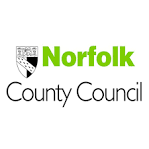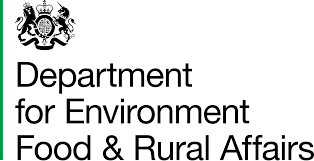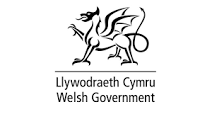PRESS RELEASE : Preferred route for Norwich Western Link agreed by councillors [July 2019]
The press release issued by Norfolk County Council on 15 July 2019.
A preferred route for a new link road that would significantly improve travel between the A47 and Broadland Northway west of Norwich has been agreed by Norfolk County Council’s Cabinet today (Monday 15 July).
The Norwich Western Link is one of the County Council’s key infrastructure priorities and is needed to reduce traffic congestion, rat-running and delays to journeys on minor roads to the west of Norwich. There is strong support from the public, the business community, emergency services, local councils and MPs for a link road to be created.
Having considered and discussed a report on the Norwich Western Link for around an hour, the Council’s Cabinet members agreed with officers’ recommendation and approved Option C as the preferred route.
The Norwich Western Link preferred route is a 3.9 mile dual carriageway that would link from the roundabout at the western end of Broadland Northway (formerly the NDR), cross the River Wensum on a viaduct and join the A47 via an improved junction at Wood Lane, which forms part of Highways England’s plan to dual the A47 between North Tuddenham and Easton.
Cllr Andrew Proctor, Leader of Norfolk County Council, said: “We need good transport networks in Norfolk to enable our communities and businesses to thrive and to give people a better quality of life. A brand new high standard road between Broadland Northway and the A47 is badly needed to tackle the traffic problems in this area, which are likely to only increase with the long-term population and business growth set to take place in and around Norwich.
“The Norwich Western Link will also help to reduce emergency response times, including to the nearby Norfolk and Norwich University Hospital, and improve access to Norwich Airport, Norwich Research Park and the new Food Enterprise Zone, all of which have ambitions to grow and create more jobs in the months and years ahead.”
Cllr Martin Wilby, Cabinet Member for Highways, Infrastructure and Transport at Norfolk County Council, said: “This is an important day for the county. We know there is strong backing for this link road to be created and agreeing the preferred route takes us another step closer to starting construction in late 2022.
“We’re very conscious of our responsibilities in making the Norwich Western Link a reality, to local residents, to the environment and to delivering the best outcome for the whole of Norfolk. This route balances all these considerations, limiting environmental impacts, having a high cost-to-benefit ratio, reducing congestion and rat-running on existing roads, minimising the impact on communities and properties, and receiving considerable support through our recent consultation.”
The total cost of delivering the Norwich Western Link, including inflation, is estimated at £153m and, subject to securing funding and completing necessary statutory processes, the County Council is aiming to open the road to traffic in early 2025. Together with the A47 dualling between North Tuddenham and Easton, due to get underway in early 2022, this would create a fully dual carriageway orbital route around Norwich.
Also at today’s Cabinet meeting, councillors agreed to submit a Strategic Outline Business Case (SOBC) to the Department for Transport for the Norwich Western Link, which would enable it to be considered for funding as a Large Local Major scheme. The SOBC will be submitted by the end of July subject to the Norwich Western Link being identified as a priority scheme by Transport East, the sub-national transport body that covers Norfolk, Suffolk, Essex and Southend-on-Sea.
The Cabinet also agreed to bring forward around £1.5m of spending on the Norwich Western Link in order to maintain the project’s timetable.
Protecting the environment
The alignment and elements of the design of the preferred route for the Norwich Western Link would limit environmental impacts, but mitigation measures would also be put in place to minimise any adverse impacts and, where possible, enhance the environment in the area.
The aim of achieving ‘biodiversity net gain’ means the project would leave habitats for wildlife in a measurably better state than before construction began. This would be achieved through, for example, creating new habitats, planting and including features such as green bridges.
The project will have no adverse impacts on the integrity of the River Wensum Special Area of Conservation, which can be achieved through, for example, the design of the viaduct. We have consulted Natural England and the Environment Agency and they consider that if a new road is required, a new viaduct would be an acceptable solution subject to appropriate design and construction methods.
A Norwich Western Link Ecology Liaison Group is also being established, involving representatives from local nature conservation groups with the purpose of sharing information and ideas and providing in-depth local insight on ecological matters.
Wider transport context
There are ambitious transport plans for Norwich as part of the ‘Transport for Norwich’ initiative, with a focus on increasing public transport usage and supporting people to walk and cycle where journey distances are appropriate.
Part of the plan to improve the way people travel within the city is the need to provide adequate transport infrastructure so that those trips that don’t need to be routed through the city have viable alternatives, such as the outer ring road, associated radial routes and Broadland Northway. The Norwich Western Link would form part of this improved infrastructure.
In addition, Greater Norwich has been shortlisted as one of 12 city areas to apply for a share of the Department for Transport’s (DfT’s) £1.2bn Transforming Cities Fund. The fund aims to make it easier for people to access jobs, training and retail, and also aims to respond to issues around air quality.
In January 2019, Norfolk County Council, in partnership with Norwich City Council, Broadland District Council and South Norfolk Council, was awarded £6.1m from an initial £60m pot, which included funding for improvements to Norwich Bus Station, investment in the blue and green pedalway routes in Hethersett and Thorpe St Andrew, and car and bike share schemes. The TfN team are now working with DfT on detailed proposals in order to apply for further funding.
Complementary transport measures
One of the Norwich Western Link’s project objectives is to encourage people to shift the way they travel to use more sustainable forms of transport, such as walking, cycling and public transport.
The traffic relief the new dual carriageway road would provide on existing minor roads and through communities in the area would contribute to this by creating a more pleasant environment in which people could feel more confident walking or cycling. The Norwich Western Link will also provide opportunities for improvements in public transport routes and bus journey time reliability due to reduced traffic along existing routes.
Now that a preferred route has been agreed, a package of complementary transport measures will be developed, designed to support people to transfer journeys, particularly those over shorter distances, from using motorised vehicles to travelling on foot or by bike.
Introducing traffic measures designed to limit the amount, speed and type of vehicles using the existing road network in the area will also be considered as part of the project.
Public consultations
An initial consultation on transport issues in the area to the west of Norwich was carried out in the Summer of 2018. More than 1,700 responses were received in total. The consultation found there was very strong support for creating a new link, with 86% of respondents to a question about which options they wanted the council to consider in order to tackle transport issues in the area selecting a new road link between the A47 and Broadland Northway.
This strong support was also evidenced through the responses a consultation on a shortlist of road options in winter 2018/19. More than 1,900 people responded and 77% of respondents either agreed or mostly agreed when asked to what extent they agreed there was a need for a Norwich Western Link.
Through the same consultation, people were asked to select any of the shortlisted options they would support as a Norwich Western Link. People were also able to select ‘none of them, do nothing’ and ‘none of them, but something should be done’.
Of all the road options, Option D ranked as the most popular solution with Option C the second most popular. Option B was notably less popular and Option A the least popular. The ‘do nothing’ option received a similar amount of support as Option B and ‘none of them, but something should be done’ was the least popular choice overall.



